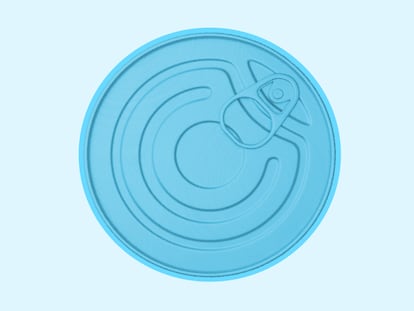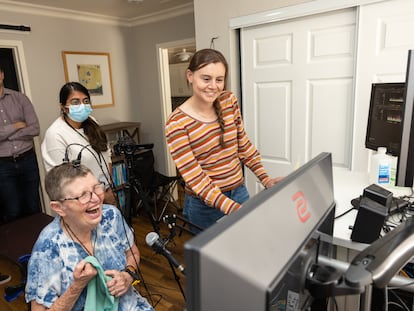What is cold plasma, and why is it used in some medical treatments?
The substance is now utilized to treat wounds and tumors with very promising results

Cold plasma is an excited gas. The first thing to note is that it is the fourth state of matter. Until recently, when we were taught about the states of matter in school, we were told that there were three: solid, liquid and gas. In reality, there is a fourth state, which is the plasma state. Plasma is a gas that contains a lot of energy and is ionized. It has a large number of particles, which are used for medical purposes.
Traditionally, cold plasma was used to treat surfaces. TV screens are made of plasma, as are fluorescent lights. But plasma is most common in nature. For example, the Sun is extremely hot plasma. So are the northern lights, which appear when the gas in the atmosphere is ionized; the colors depend on which gas is ionized: when nitrogen is ionized we see green, and when oxygen is ionized we see lilac or pink.
Until about 15 years ago, it was difficult to generate cold plasma in laboratories at atmospheric pressure because it required very specific conditions. Then, small devices with heads similar to a ballpoint pen were designed, and they do work in atmospheric conditions, i.e., at ambient pressure and temperature. The advantage of this as opposed to plasma from the Sun, for example, is that the plasmas that we can create using these medical devices are cold. When we say they are cold, we mean that they are at body temperature. That allows us to use them to treat biological tissues.
Cold plasma medical areas in which they are beginning to be used are for treating wounds and for treating tumors. These two medical areas are being researched more intensively because there have been very promising results. Companies around the world are already starting to develop these cold plasma medical devices for these two therapeutic purposes.
Plasma contains a large number of active species. Indeed, reactive oxygen and nitrogen species are some of the most active agents it contains. Reactive species are very small, highly reactive molecules (they readily react in the presence of other molecules) because they have an electron shell. We use oxidative stress as a tool. Oxidative stress is caused by the imbalance between the production of reactive oxygen species and a biological system’s ability to repair the damage that it causes. Oxidative stress is linked to many diseases and causes a reduction in cellular potency, which, in severe cases, can lead to cell death.
When we induce oxidative stress at low doses using cold plasma devices to treat wounds, it helps stimulate the regeneration of healthy tissues. It helps the wound tissue to regenerate. At the same time, in chronic wounds like diabetic ulcers that are very difficult to heal, it can attack the bacteria in that wound. This double effect makes it a very effective treatment.
To treat tumors, patients are given higher doses to selectively attack cancer cells. If we compare a healthy cell with a cancer cell, we see that the latter reproduce much faster, so they have a very high metabolic state and contain more reactive species than healthy cells. When we administer a large dose of cold plasma that contains reactive species to a tumor, because cancer cells have a higher amount of oxidative stress of their own, we increase their levels to the limit that induces cell death. But the healthy cells around the tumor start out with a lower amount of reactive species, so they don’t reach that limit; they can compensate for the oxidative stress we induce and survive.
Many research teams around the world are currently investigating treatments for tumors using cold plasma. Several clinical studies are underway. In Europe, a clinical trial led by Germany is investigating tumors of the head and neck. In the United States, another clinical trial is testing a very powerful device for treating several types of solid tumors.
Cristina Canal is a professor and director of the PlasmaMED laboratory of plasmas for biomedical applications at the School of Engineering of Barcelona East at the Universitat Politècnica de Catalunya. She is also president of PlasTHER, a 24-country research network for studying cold plasma’s therapeutic applications.
Sign up for our weekly newsletter to get more English-language news coverage from EL PAÍS USA Edition
Tu suscripción se está usando en otro dispositivo
¿Quieres añadir otro usuario a tu suscripción?
Si continúas leyendo en este dispositivo, no se podrá leer en el otro.
FlechaTu suscripción se está usando en otro dispositivo y solo puedes acceder a EL PAÍS desde un dispositivo a la vez.
Si quieres compartir tu cuenta, cambia tu suscripción a la modalidad Premium, así podrás añadir otro usuario. Cada uno accederá con su propia cuenta de email, lo que os permitirá personalizar vuestra experiencia en EL PAÍS.
¿Tienes una suscripción de empresa? Accede aquí para contratar más cuentas.
En el caso de no saber quién está usando tu cuenta, te recomendamos cambiar tu contraseña aquí.
Si decides continuar compartiendo tu cuenta, este mensaje se mostrará en tu dispositivo y en el de la otra persona que está usando tu cuenta de forma indefinida, afectando a tu experiencia de lectura. Puedes consultar aquí los términos y condiciones de la suscripción digital.
More information
Archived In
Últimas noticias
Raúl Rocha, from jet-setting with Miss Universe to arms trafficking and fuel theft
80,000 barrels of Mexican oil sent to Cuba: Havana drawn into the US–Mexico clash
Human rights activists, opposition members, and a minor: Maduro’s other political prisoners
Israel sparks a civil war within the MAGA movement
Most viewed
- Reinhard Genzel, Nobel laureate in physics: ‘One-minute videos will never give you the truth’
- Pablo Escobar’s hippos: A serious environmental problem, 40 years on
- Charles Dubouloz, mountaineering star, retires at 36 with a farewell tour inspired by Walter Bonatti
- Why we lost the habit of sleeping in two segments and how that changed our sense of time
- The fall of a prolific science journal exposes the billion-dollar profits of scientific publishing










































